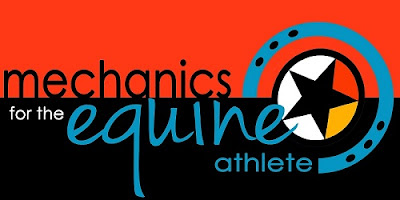Wednesday, February 18, 2015
Cold Hard Truths of Saddle Fit
Once again, let's talk saddle fitting. No matter what your opinion may be, odds are you are able to find an online source to back you up. The internet is a wonderful source of information, however, it can also be quite frightening! From "The saddle fit is all about the rider's comfort, not the horse's." to "Every performance issue you may possibly have is saddle fit related." Both ends of the spectrum are more than concerning to me as a bodyworker and saddle fitter and both scenarios I encounter often.
I was trained in saddle fitting by a UK society master saddler and I also worked with several US saddle makers studying the craft (at this point, I have chosen not to rep for any brand.) However, the greatest feedback I receive is from working on the horse during my bodywork sessions. We can tell so much about their movement by their muscle development and the quality of their soft tissue. It doesn't lie. We typically think that when a horse flinches it is pain and when it doesn't flinch, it is not in pain. However, it's not quite so simple. A horse that has suffered soft tissue damage (not uncommon) may not react to palpation. The tissue becomes deadened and unresponsive. In this case, they also will not sweat even. I do want to see a reaction when I palpate, but I do not want to see an over or under response. When doing a belly lift, the back should not lift a couple inches before it flattens out. This indicates a dropped back due to discomfort.
It is true, there is no "perfect" fit. This leads itself to, yet again, two extreme ends of the spectrum. Those that think "Oh nothing is perfect, so this $750 poorly made saddle is just fine and the horse can deal." and "I bought this custom saddle so it darn well better be perfection and if my horse spooks in the corner, it's all this saddles fault!!"
Truth of the matter is, there is a lot that goes into selecting a "good" fit. What looks like a great fit statically (horse standing still) may not work once you add the mechanics of the rider and the horse. And what looks like a less than ideal match statically, may actually work in motion. We, as riders, greatly affect saddle fit and sometimes what we need is not what our horses need. In that case, if you want a happy horse, you are going to have to make some comprises. Shimming the daylights out of the saddle in order to be able to sit correctly is not advisable. Sometimes it's our own weakness that are at the heart of the problem and sometimes it is just a plain bad fit. I can say that because I have been there. I can't ride in just any saddle due to past injuries and weaknesses. Being aware of these issues and working on them will only be of benefit to my horse, the saddle fit, and in obtaining correct movement. It may fit my horse but if it leaves me crippled, it's not an option. That said, I fit my horse first and then do some hard searching to find a design that also works for me. And yes, there was a time that I physically wasn't capable of riding a horse because of his conformation, width, movement, and the type of saddle he had to have. If my horse can't do the job that I'm asking him to do because the saddle is restricting his movement, he becomes lame, or tries to buck me off then what good is that saddle that fit me so well?
When it comes to saddle fit, I am a bodyworker first and saddle fitter second. I do not sell saddles, and I have nothing to gain by saying yay or nay. I am simply working as advocate for the horse to the best of my well trained ability. And yes, my opinions are often not met with open arms by saddle reps, tack store owners, and peanut galleries. In fact, I'm quite certain articles have been written about me and the advice I have given! {grin}
Since no fit is perfect, my criteria first and foremost is to determine if the saddle fit is going to cause damage and/or restrict movement. Secondly we need to make sure the rider can cope. And the brutal reality is sometimes a rider isn't able to ride in what the horse needs. Some horses are quite easy to fit and the rider may have plenty of options that will work, while other horses are extremely difficult and the rider may only have one style of tree/saddle as an option.
The best advice I can give when selecting a saddle is do not be in a hurry. Just because you want or need a saddle right now, doesn't mean you will find the right one, right now. Be realistic about your horse's needs and your needs. There has gotten to be a lot of very well designed saddles on the market since the early days of my fitting career. A lot of customized options weren't as available as they are now. Always buy the best your budget allows. You may find an older ugly saddle that works perfectly that's in your price range. The horse doesn't care if the saddle is ugly but he does care if it causes him pain or not.
For more information and advice, please visit Mechanics for the Equine Athlete at www.fortheequine.com

No comments:
Post a Comment